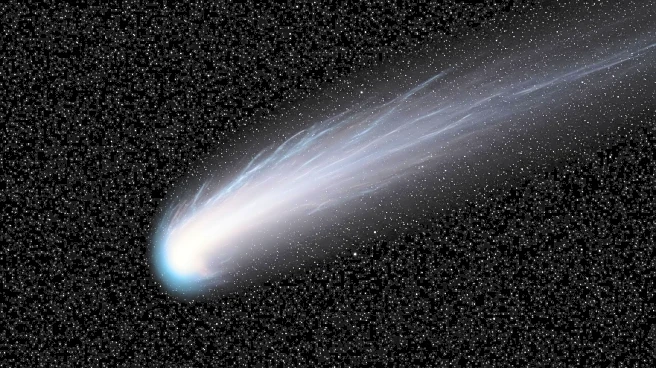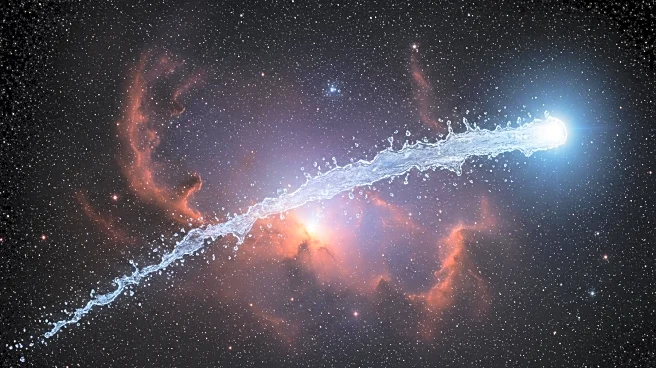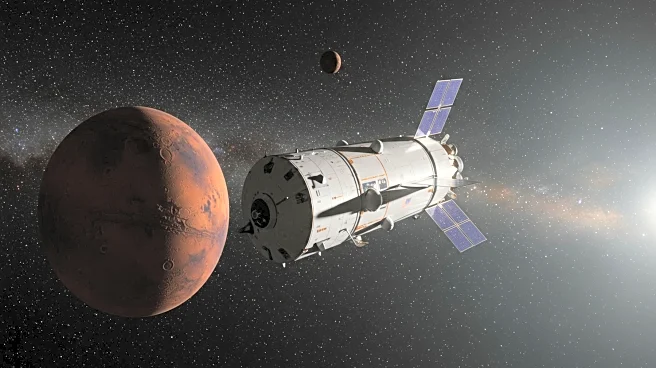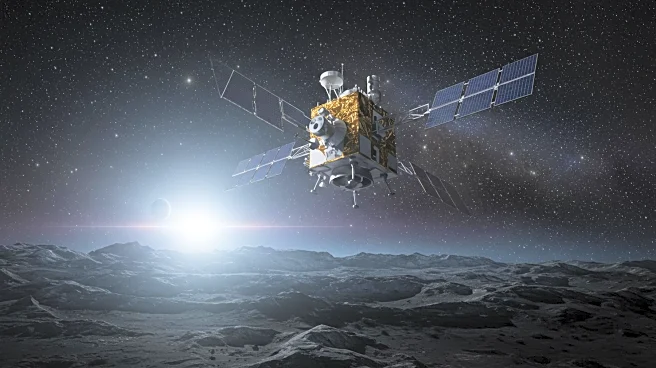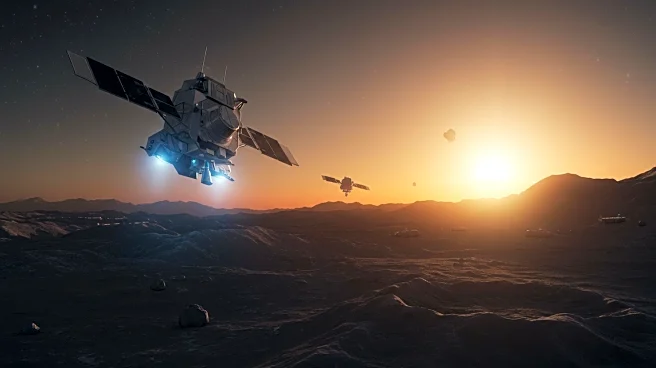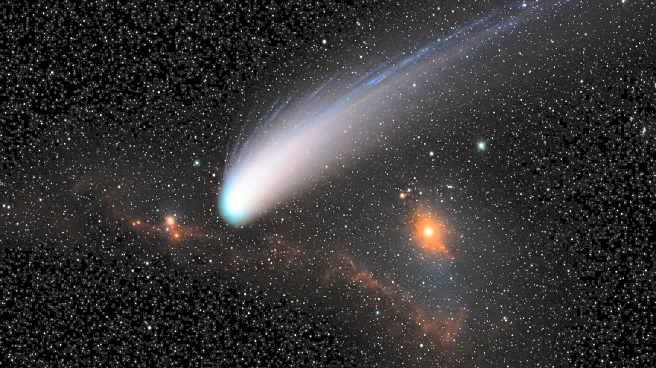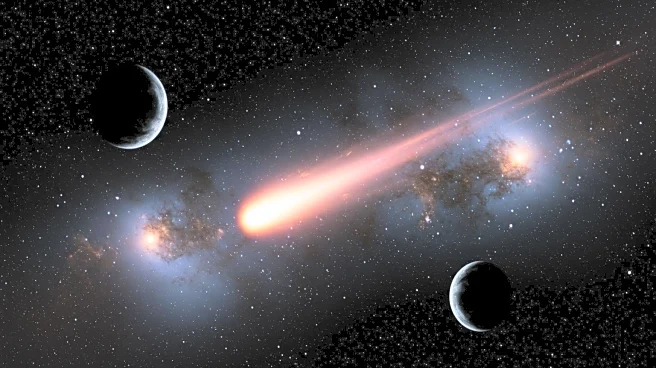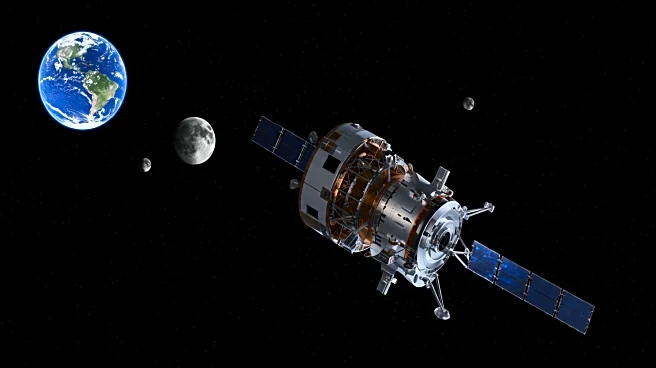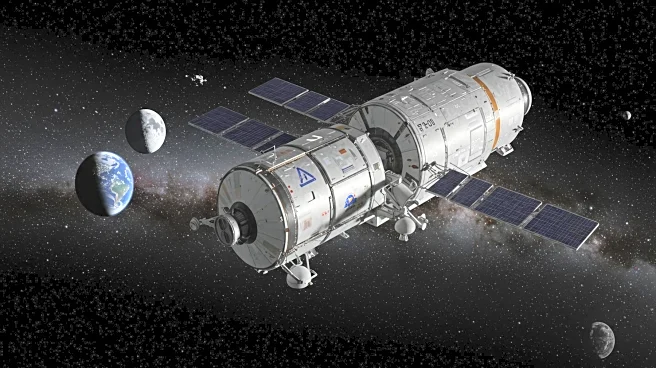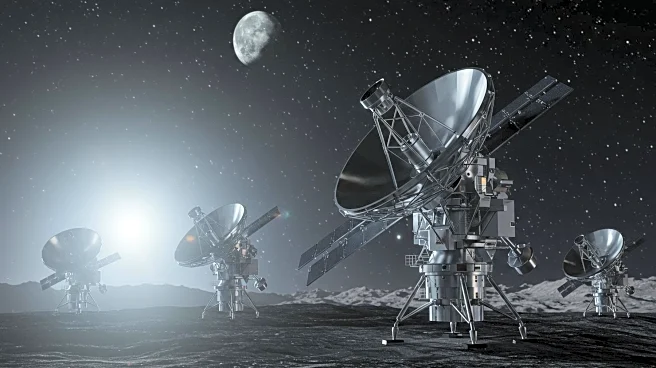What is the story about?
What's Happening?
A recent study led by Martin Cordiner of NASA's Goddard Space Flight Center has found that water on the Halley-type comet 12P/Pons-Brooks is strikingly similar to Earth's ocean water. Using the Atacama Large Millimeter/submillimeter Array (ALMA), scientists conducted the first detailed spatial mapping of ordinary and 'heavy' water in the comet's gas cloud. The study, published in Nature Astronomy, suggests that comets like 12P/Pons-Brooks, which are remnants from the Solar System's formation 4.5 billion years ago, may have contributed to Earth's water supply. This finding supports the long-held theory that comet impacts could have delivered water to Earth, making it habitable.
Why It's Important?
The discovery has significant implications for understanding the origins of Earth's water and, by extension, the conditions that made life possible. The isotopic signature of the comet's water being nearly identical to Earth's suggests that comets could have played a crucial role in delivering not just water but potentially other life-essential materials. This finding could reshape scientific perspectives on planetary formation and the distribution of water in the Solar System. It also provides a new avenue for research into the history of water on Earth and other celestial bodies, potentially influencing future space exploration missions.
What's Next?
The study opens up new research opportunities to explore the role of comets in the early Solar System. Scientists may focus on analyzing other comets to compare their water isotopic signatures with Earth's. This could lead to a broader understanding of how water and other materials were distributed across the Solar System. Additionally, future space missions might prioritize comet exploration to gather more data, which could further validate or challenge existing theories about the origins of Earth's water.
Beyond the Headlines
The study also touches on the broader implications of extraterrestrial water sources, which could influence the search for life beyond Earth. Understanding the distribution of water in the Solar System could help identify other planets or moons that might harbor life. This research could also inform the development of technologies for utilizing extraterrestrial water resources in future space missions, potentially aiding in the establishment of human settlements on other planets.
AI Generated Content
Do you find this article useful?
